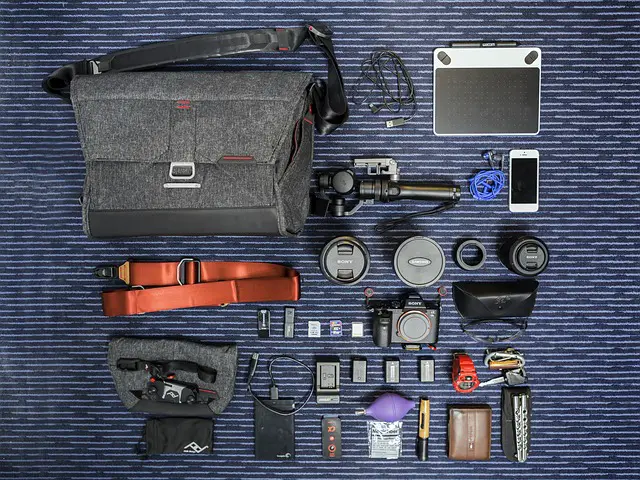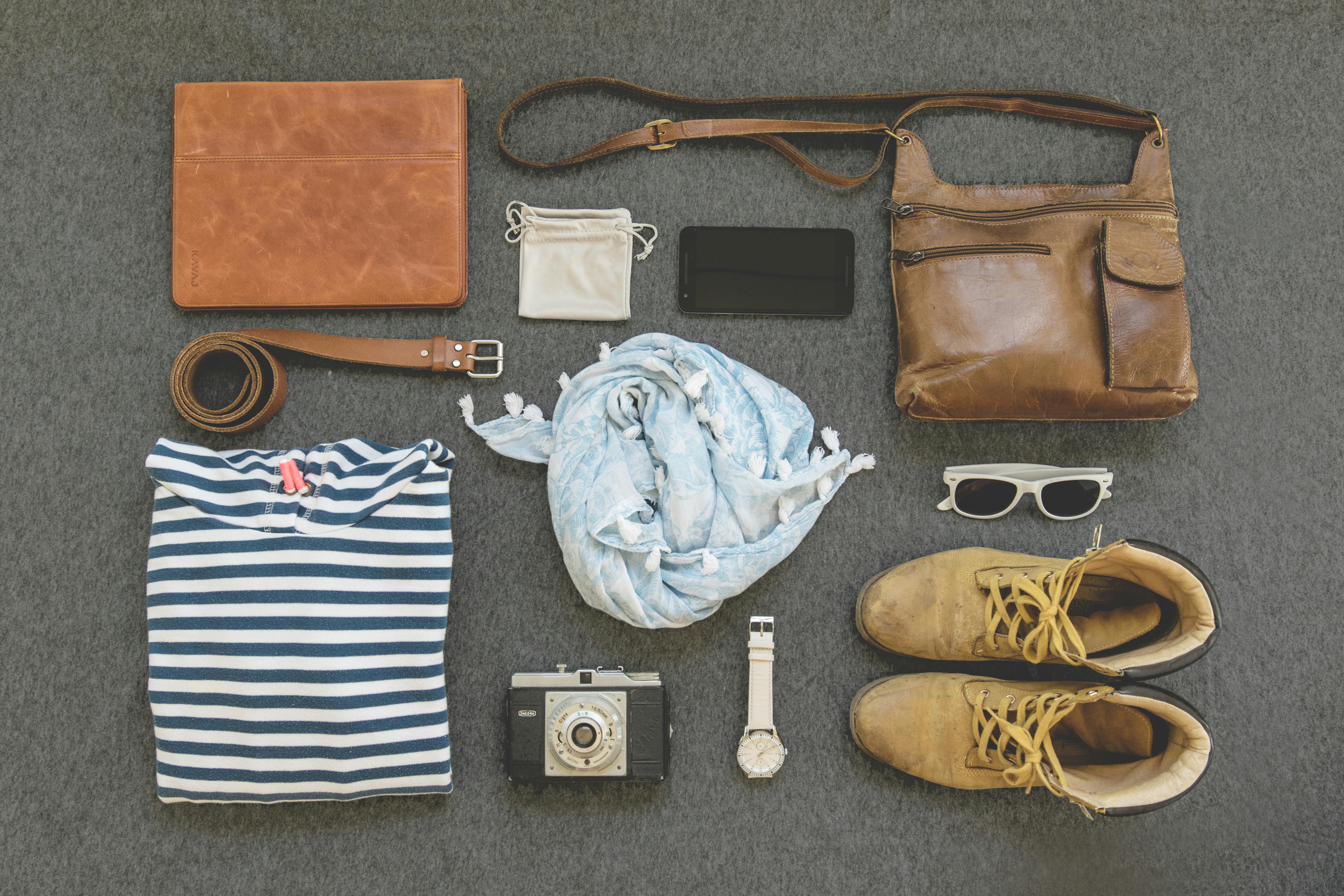How To Wear Tool Belt

A tool belt is a great way to keep your tools organized and easily accessible while you are working. Wearing a tool belt correctly will help make sure that you have the right tools for the job, and prevent any unnecessary injuries from occurring. In this article, we will discuss how to properly wear a tool belt in order to ensure that it fits properly and is comfortable.Wearing a tool belt for comfort requires some planning. First, make sure the belt is not too tight. The belt should fit snugly, but not so tight that it digs into your waist or hips. You should also look for a belt that is made from a breathable material like canvas or nylon, which will help keep you cool and comfortable while you work.
Next, adjust the straps of the tool belt so that they are secure but not constricting. Make sure to position the straps in such a way that they do not rub against your body or interfere with your movements.
Finally, consider adding extra padding to the waist and hip area of the tool belt. This can help distribute weight more evenly and prevent discomfort when you bend or reach in any direction while using tools.
Tips For Wearing A Tool Belt Properly
Properly wearing a tool belt is essential for both comfort and proper tool management. Here are some tips to help you wear your tool belt correctly:
1. Start by finding the right size. A good fit helps you maintain balance and also prevents tools from slipping out of the pockets. Make sure that the belt is snug but not too tight; it should fit comfortably around your waist without digging in or causing discomfort.
2. Place heavier tools in the center of your body where they are better balanced, and lighter tools near the sides. This will help to even out the weight distribution and make it easier to carry all your tools without causing any strain to your back or neck muscles.
3. Make sure that all of your tools are securely fastened to the belt before putting it on; this will prevent them from falling out when you bend down or move around. If possible, use a lanyard to secure items like hammers or screwdrivers so they don’t get lost or damaged while working.
4. Avoid overloading the tool belt with too many tools; this can cause strain on your back and can make it difficult to maneuver around tight spaces. Distribute heavier items across both sides of the belt so that one side does not become overloaded and cause an imbalance in weight distribution.
5. When not in use, make sure to secure all loose items such as screws, nails, and other small parts into their respective pockets or containers so they don’t fall out and get lost while you are working.
By following these tips, you will be able to wear your tool belt properly and safely while getting maximum benefit from its features!
What To Consider When Choosing A Tool Belt
When it comes to choosing a tool belt, there are a few factors to consider. First and foremost, you want to make sure that the belt fits your body type. If it is too big or too small, it can be uncomfortable and difficult to use. Secondly, you need to make sure the material of the belt is durable enough to handle the tools you will be carrying. Additionally, you want to choose a tool belt that provides adequate storage space for all the tools you plan on carrying. Finally, consider any extra features such as pockets or loops that will make your job easier.
When selecting a tool belt, comfort is key. Look for an adjustable belt with padding on the back and sides for maximum comfort when carrying heavy tools. It should also have breathable material so that sweat will not be trapped between your body and the belt while working in hot conditions. Make sure that it is easy to take on and off as well as adjust for a perfect fit.
Durability is also an important factor when selecting a tool belt. Look for belts made from materials such as leather or nylon which are both strong and long lasting materials. If you plan on using your toolbelt in wet conditions or if it will need frequent cleaning then look for water-resistant materials such as neoprene which can help protect your tools from moisture damage.
Finally, consider any extra features such as pockets or loops that may be beneficial when using your toolbelt. This could include pockets for nails and screws, loops for hammers or other heavy items, or even compartments for holding phones or other small items you may need access to during work hours. Taking into account these considerations will help you choose the best toolbelt for your needs.
Essential Tools To Carry In Your Tool Belt
Having the right tools in your tool belt is essential for any job. There are certain tools that should always be included in your tool belt, no matter what kind of job you are doing. These essential tools include a hammer, screwdrivers, pliers, adjustable wrenches, and tape measure.
A hammer is a must-have for any tool belt. Hammers come in a variety of sizes and shapes, so it is important to make sure you have the right one for the job at hand. Make sure to have a claw hammer and a ball peen hammer handy.
Screwdrivers are also essential tools to carry in your tool belt. Depending on the type of work you are doing, you may need flathead, Phillips head, or torx screwdrivers. Having several sizes of each type is recommended so that you can easily switch from one size to another as needed.
Pliers are another necessary tool when working with various materials. Needle-nose pliers and slip-joint pliers are two types that should be included in your tool belt for use on different jobs. Some pliers come with wire cutters as well which can be very useful for cutting electrical wires or other materials that require precise cuts.
Adjustable wrenches can come in handy for many jobs as they can be used to tighten or loosen nuts and bolts of various sizes without having to switch out wrenches constantly. Having a few different sizes of adjustable wrenches ensures that you’ll always have the right size wrench when needed.
Finally, having a tape measure is essential when measuring materials or distances for any job or project you may be working on. A good quality tape measure with both metric and imperial measurements should always be included in your tool belt so that you can quickly measure what needs to be measured without having to search for other measuring devices such as rulers or calipers.
Types Of Tool Belts Available
Tool belts come in a variety of shapes and sizes to fit the needs of any user. Whether you are a carpenter, electrician, plumber, or any other tradesman, there is a tool belt for you. The most common types of tool belts are the traditional leather work belt and the carpenter’s style tool belt.
The traditional leather work belt is a great option for those who need to carry a few tools at once without the bulk of a larger tool belt. This type of tool belt is also great for those who don’t want the bulk of a carpenter’s style tool belt but still need to carry some tools at once. These belts usually come with several pockets and loops for easy access to tools and other items needed on the job.
The carpenter’s style tool belt is designed specifically for carrying multiple tools at once. They usually come with several pockets that can be easily accessed while working on an assignment or project. This type of belt also typically comes with suspenders so that it can be securely fastened around your waist.
Another type of tool belt is the electrician’s style tool belt which offers more specialized pockets for carrying electrical equipment such as drills and testers. These types of belts usually come with additional straps that can be used to secure large pieces of equipment while working in tight spaces or maneuvering around obstacles in an area where it would be difficult to reach into a pocket without causing damage or disruption to the work space.
Finally, there are also specialty tool belts available such as those designed specifically for painters or plumbers which have pockets made from materials that will not scratch delicate surfaces while still providing easy access to tools needed on the job site.
No matter what type of trade you may have, there is sure to be a tool belt available that fits your needs perfectly! With so many options available it can be hard to choose one but with some research and comparison shopping you should be able to find the perfect fit!

Benefits Of Wearing A Tool Belt
Wearing a tool belt is one of the most important safety precautions you can take when working on a construction site. Tool belts provide easy access to your tools, allowing you to keep them close at hand and reducing the amount of time you need to spend searching for them. They also help keep your tools organized and prevent them from slipping off your body or falling on the ground. In addition, tool belts allow you to keep your hands free while working, which can improve productivity and reduce fatigue.
Tool belts also help protect your back from injury caused by bending over to pick up heavy tools or maneuvering them in tight spaces. By keeping your tools within reach, you can avoid having to bend over or reach too far for them, which can strain your back muscles and lead to injury. Wearing a tool belt also helps distribute the weight of heavy tools more evenly across your body, reducing strain on any one area.
Finally, wearing a tool belt can help increase job satisfaction by keeping workers organized and efficient. By having all their tools within easy reach, workers are able to complete tasks quicker and more efficiently while having fewer frustrations associated with searching for missing items or struggling with awkward positions that cause discomfort and fatigue. This increased efficiency can lead to higher job satisfaction and better overall performance on the job site.
Organizing Your Tools in Your Tool Belt
Having the right tools on hand is essential for any job. Keeping your tools organized and easily accessible is essential to getting the job done quickly and efficiently. Having a tool belt can make it much easier to keep everything organized and within reach. Here are some tips for organizing your tools in your tool belt.
The first step is to decide which tools you need to carry in your tool belt. This will depend on the types of jobs you do most often, so consider what type of projects you typically work on and what tools you need for each one. Once you have a list of the essential items, it’s time to start organizing them into your tool belt.
Start by placing the most frequently used items closest to your body for easy access. You should also consider how often each item is used when deciding where it should go in your tool belt; items that are used more often should be placed closer to the front for quicker access.
Once you have placed all of the larger items like hammers and screwdrivers, it’s time to fill in with smaller items like screws, nails, bolts, and washers. These can be organized into small compartments or pouches within the tool belt itself, or into separate containers that attach to the outside of the belt or clip onto a loop or strap.
Finally, make sure all items are secured properly so they don’t fall out while you’re working. Your tool belt should also be checked regularly for any signs of wear and tear that could cause damage or injury if not addressed immediately. With some careful planning and organization, you can ensure that all of your necessary tools are always close at hand when you need them most!
Storing Your Tools In Your Tool Belt Safely
Having the right tools on hand is essential for any professional. This is why having a tool belt that you can store all your tools in is so important. However, it’s not just enough to have a place to store your tools, you also need to know how to store them properly and safely. Here are some tips for storing your tools in your tool belt safely:
First, make sure that you have the right tool belt for the job. Choose one with enough pockets and compartments to fit all of your tools. If possible, get one with adjustable straps or belts so you can customize it to fit your body shape and size.
Second, when loading up your tool belt, make sure that you distribute the weight evenly throughout the belt or pockets. You don’t want one side of the tool belt heavier than the other as this could cause an imbalance when wearing it or even cause injury if you’re lifting something heavy while wearing it.
Third, make sure that each pocket is labeled correctly so that you know where each tool should be stored. This will help keep everything organized and make it easier and faster for you to find what you need when needed.
Finally, always check that all of your tools are secured properly before starting any job. Make sure they are buckled in place or snapped into place so that they won’t fall out while you are working. This will also help prevent any injury from occurring if any of the tools were to fall out and hit someone or something else while in use.
By following these tips, you can ensure that your tools stay safe and secure in your tool belt while keeping yourself safe as well. Having the right tools on hand can make any job easier and more efficient, so take care of them and keep them stored safely at all times!

Conclusion
Wearing a tool belt is an essential part of any job that requires the use of tools. It provides the user with easy access to tools, safety, and organization. To wear a tool belt properly, you should consider the type of belt that best suits your body type and the tools you plan to carry. You should also make sure that all your tools are securely fastened and that the weight is evenly distributed across your hips. With proper fitting and use, a tool belt can help to make your work easier and safer.
Given its many benefits, it is important for anyone who uses tools regularly to learn how to wear a tool belt properly. By doing so, you can ensure that you are safe while using your tools and maximize their effectiveness.
